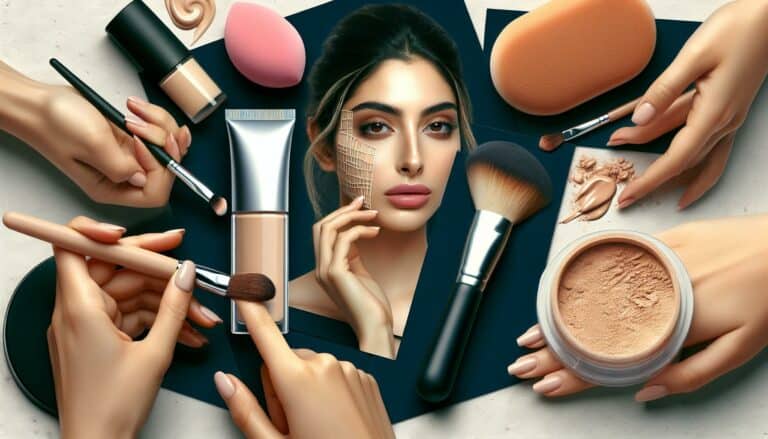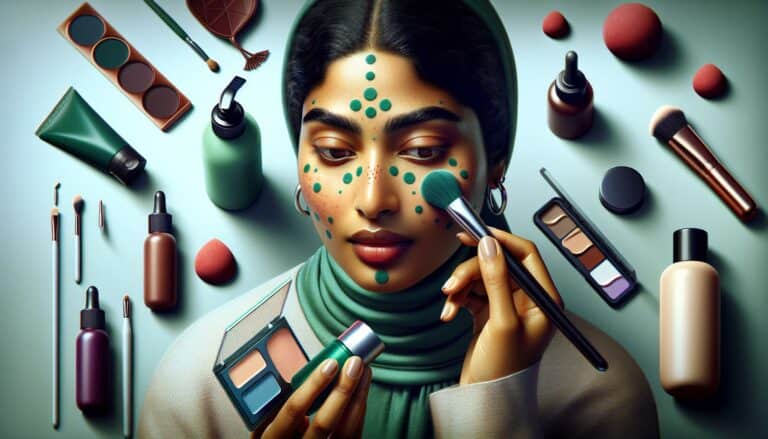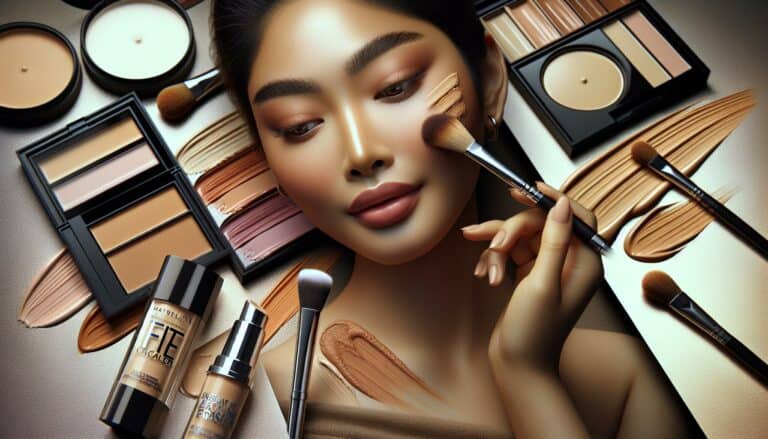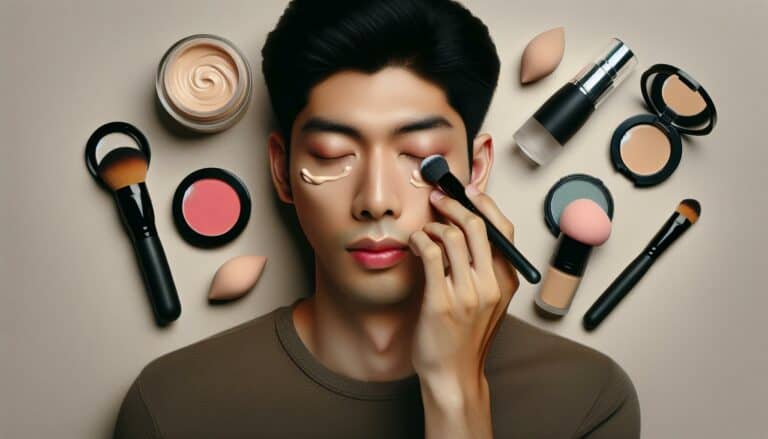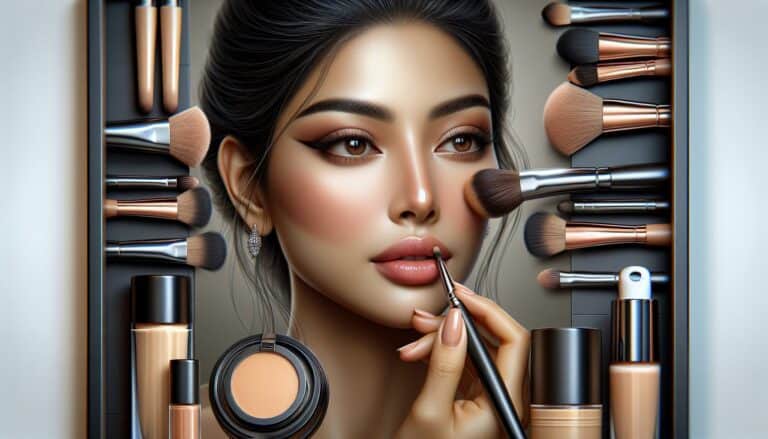How to Use Concealer for Dark Circles: A Step-by-Step Guide
Finding the Perfect Concealer
When dealing with dark circles, Finding the Perfect Concealer is your first step towards a radiant look. The market is flooded with options, but how do you choose the right one for your skin? It’s not just about the shade; the formula, coverage, and undertone all play crucial roles.
Understand Your Skin
Firstly, get to know your skin type and the kind of coverage you need. Is your skin oily, dry, or combination? Are your dark circles moderately visible or more pronounced? These answers will guide your choice.
- Oily Skin: Look for matte finish concealers.
- Dry Skin: Creamy and hydrating formulas work best.
- Combination Skin: A balance between matte and creamy should be ideal.
Shade and Undertone
It’s critical to match the concealer not just to the overall tone of your skin, but specifically the undertone. Most people fall into one of three categories: cool, warm, or neutral.
| Undertone | Signs |
|---|---|
| Cool | Veins appear blue or purple |
| Warm | Veins look greenish |
| Neutral | Hard to determine; a mix of blue and green veins |
Picking the right undertone ensures the concealer blends seamlessly, offering a naturally flawless coverage.
Test and Sample
“Don’t be afraid to test different shades and formulas,” says makeup expert Jane Doe. Finding the perfect match might take some trial and error. Most beauty stores offer samples or have testers available, so make use of those resources. Remember, the right concealer is out there, and with a bit of patience, you’ll find it.
Matching Your Skin Tone
When seeking the perfect concealer, it’s critical you find a match that closely resembles your natural skin tone. This might sound straightforward, but skin tone variations can make this task a bit tricky. Your skin tone isn’t just about being light or dark; it’s also about the undertones of your skin, which can be cool, warm, or neutral.
Here’s a basic guide to understanding undertones:
- Cool: Your skin has hints of blue, pink, or red.
- Warm: Your skin leans towards peach, yellow, or golden tones.
- Neutral: Your skin does not have an overt blue or yellow undertone but rather a mix, or it’s hard to distinguish.
To determine your undertone, look at the veins on your wrist in natural light. If they appear blue or purple, you’re likely cool-toned. If they seem green, you’re warm-toned. If it’s hard to tell, you might be neutral.
Pro Tip: “Mixing different shades of concealer can also help achieve a perfect match. Don’t be afraid to blend two concealers to cater to your skin’s needs, especially if you’re between shades or your skin tone changes with the seasons.”
| Undertone | Suggested Concealer Shade |
|---|---|
| Cool | Pink-based or peachy shades |
| Warm | Yellow or golden-toned shades |
| Neutral | Beige or neutral shades |
Matching your concealer to your skin tone isn’t just about finding the right shade. It’s also essential for seamless coverage of dark circles. When your concealer blends perfectly, it not only covers dark circles but also enhances your natural complexion. Remember, the ultimate goal is to look as though you’re not wearing any makeup at all.
Considering Coverage and Consistency
When tackling dark circles, understanding the coverage and consistency of concealer you need is a game-changer. Different concealers offer varying levels of coverage, from light to full, and the right consistency can help in blending seamlessly into your skin, ensuring a natural look.
Coverage Levels
| Coverage Type | Description |
|---|---|
| Light | Offers a sheer finish. Ideal for minimal discoloration. |
| Medium | Balances between coverage and blendability. Suitable for moderate dark circles. |
| Full | Provides maximum coverage. Best for severe discoloration. |
Choosing the right coverage depends largely on the severity of your dark circles. For slight shadows, a light coverage concealer might suffice, allowing your skin to show through for a more natural appearance. Medium coverage works well for more noticeable dark circles, giving you a balance between concealment and a natural look. However, if your under-eye area has significant discoloration, full coverage will be your best bet to completely cover those dark circles.
Consistency Matters
The consistency of your concealer plays a crucial role in how it applies and blends with your skin.
- Liquid: Lightweight and ideal for all skin types, especially oily skin. It’s great for layering and provides a range from light to full coverage.
- Cream: Thicker and more hydrating, best for dry or mature skin. Offers medium to full coverage.
- Stick: Offers full coverage and is easy to apply. Suitable for targeted applications but may be too heavy for some skin types.
“Finding the perfect harmony between coverage and consistency is key to masterfully concealing dark circles.”
By understanding your specific needs regarding coverage and consistency, you can enhance your natural beauty and minimize the appearance of dark circles. Experiment with different types to discover what works best for you.
Mastering the Application Technique
Once you’ve found your perfect concealer match, knowing how to apply it is key to achieving flawless coverage. The technique can make or break your look, so let’s dive into how you can master the application for those pesky dark circles.
Start with a hydrated base. Prep your under-eye area with a lightweight eye cream, ensuring the skin is moist but not greasy. This step helps the concealer glide on smoothly and prevents caking.
For application, there are various tools you can use, but here’s a quick guide to help you choose:
| Tool | Best for |
|---|---|
| Fingertips | Warming up the product for better blend |
| Beauty Blender | Seamless, sponge-applied coverage |
| Concealer Brush | Precise application |
Dab, don’t drag. Using your tool of choice, apply the concealer in dots starting from the inner corner of the eye, where circles are darkest. Gently blend outward for even coverage, ensuring you don’t pull or drag the skin.
To set or not to set? That’s often a question. If you’re prone to creasing, lightly dust translucent powder over the top to set the concealer. This step locks the product in place, keeping it looking fresh longer.
“The key to concealer application is blending – whether with your fingers, a sponge, or a brush. The goal is a seamless finish that looks like your skin, but better.”
Remember, less is often more. Building up concealer in thin layers can prevent heaviness and caking. With these tips, mastering the application technique becomes an achievable feat, leading you closer to that desired natural, eye-brightening effect.
Dabbing vs. Blending: The Art of Concealer
When it comes to applying concealer for dark circles, two techniques stand out: dabbing and blending. Both methods have their pros and cons, and understanding the difference between them can significantly affect the outcome of your makeup routine.
Dabbing involves gently pressing the concealer into the skin using a fingertip, a sponge, or a brush. This technique allows for precise application, targeting specific areas that require more coverage. It’s particularly effective for minimizing the appearance of dark circles as it enables the product to build up gradually without looking cakey.
| Technique | Tool Used | Coverage | Best For |
|---|---|---|---|
| Dabbing | Fingertip, Sponge, Brush | Buildable | Targeted Areas |
| Blending | Sponge, Brush | Natural | Larger Areas, Overall Finish |
Blending, on the other hand, spreads the concealer over a larger area to create a seamless finish. Using a damp beauty sponge or a dedicated concealer brush, you can achieve a natural, skin-like texture that doesn’t draw attention to fine lines or dry patches.
Tip: For the best results, start with a small amount of product and gradually build up coverage as needed. The key is to find a balance between the amount of concealer and the method of application to avoid settling into fine lines or appearing too thick.
Bold decision-making in choosing between dabbing and blending often comes down to the specific needs of your skin and the type of concealer you’re using. Some concealers lend themselves better to a dabbing motion due to their thicker consistency, while others, being more liquid, are ideal for a blended approach. Experimenting with both techniques will help you discover which works best for achieving that flawless, eye-brightening effect.
Saying Goodbye to Tired-Looking Eyes
When you’re aiming to banish dark circles, the right tools and techniques make all the difference. Alongside choosing a concealer that perfectly matches your coverage needs and skin type, another ally in your beauty arsenal should be a color corrector. These products work by neutralizing dark undertones, paving the way for a flawless application of your concealer.
A quick look at how color correctors work:
| Undertone | Color Corrector |
|---|---|
| Blue/Purple | Peach/Salmon |
| Red | Green |
| Brown/Taupe | Lavender |
Lightly apply the color corrector before your concealer to neutralize dark circles effectively. Remember, less is more; you don’t want the corrector to overpower your concealer.
Pro Tip: “Blending is crucial when it comes to makeup application. Use a damp beauty sponge for a seamless blend, ensuring there are no harsh lines between your skin and the makeup.”
After your concealer and color corrector are in place, setting them with a loose, translucent powder will prevent them from creasing throughout the day. Use a fluffy brush and gently press the powder onto the areas where you’ve applied your concealer and corrector.
By understanding the nuances of tired-looking eyes and how to effectively cover them, you’re well on your way to achieving a bright and lively look. With practice, these steps will become a quick and effortless part of your beauty routine.
Unleashing the Power of Concealers
When tackling dark circles, understanding the art of application is only half the battle; knowing the types of concealers and their best use cases is the other. Concealers come in various formulations, each designed to address different issues.
Below is a breakdown of the most common types of concealers and their ideal uses:
| Type | Ideal Use |
|---|---|
| Liquid | Light to full coverage, all skin types, especially oily |
| Cream | Medium to full coverage, dry or combination skin |
| Stick | Full coverage, spot correction |
| Color Corrector | Neutralizing dark circles & discoloration |
Liquid concealers are versatile and can offer anything from light to full coverage, making them perfect for almost everyone. They’re particularly beneficial for those with oily skin due to their matte finish.
Cream-based concealers are thicker and provide substantial coverage, ideal for camouflaging pronounced dark circles. Their creamy texture is best suited for dry or combination skin types, offering a hydrating effect.
Stick concealers offer the most coverage and are excellent for precise application. But beware, as their thick consistency can look heavy, so blending is key.
“Finding the right concealer is like finding a good friend – invaluable and transforming.”
Color correctors play a pivotal role before applying your concealer. For dark circles, peach or orange tones help neutralize bluish or purplish hues, making your concealer’s job easier and more effective.
Pairing the right type of concealer with the appropriate color corrector, blending meticulously, and setting it with a loose powder can make your under-eye area look flawless. Experimenting with these types will reveal what works best for your skin’s unique needs. Remember, less is often more. Starting with a small quantity and building up as necessary helps maintain a natural look without the product settling into fine lines.
Conclusion
Moving forward in your journey to conceal dark circles effectively, it’s essential to incorporate these steps as part of your routine. Remember, mastering the art of concealer application doesn’t happen overnight. It requires patience and practice.
“Subtlety is the key to achieving a natural, flawless look.”
Here are a few summarized tips to keep in mind:
- Start light: Add more as needed.
- Blend meticulously: To avoid caking.
- Set with powder: For longer-lasting coverage.
Below is a quick recap of the types of concealer and their best uses:
| Type | Coverage | Best for |
|---|---|---|
| Liquid | Light-Full | Oily Skin |
| Cream | Medium-Full | Dry/Combination Skin |
| Stick | Full | Precision Application |
Remember, no single product or technique works for everyone. It’s about finding what works best for your skin type, tone, and lifestyle. Experiment with different products and methods until you find your perfect match. And most importantly, embrace the process. Learning to conceal dark circles can boost your confidence, but it’s also an opportunity to take care of and get to know your skin better.



